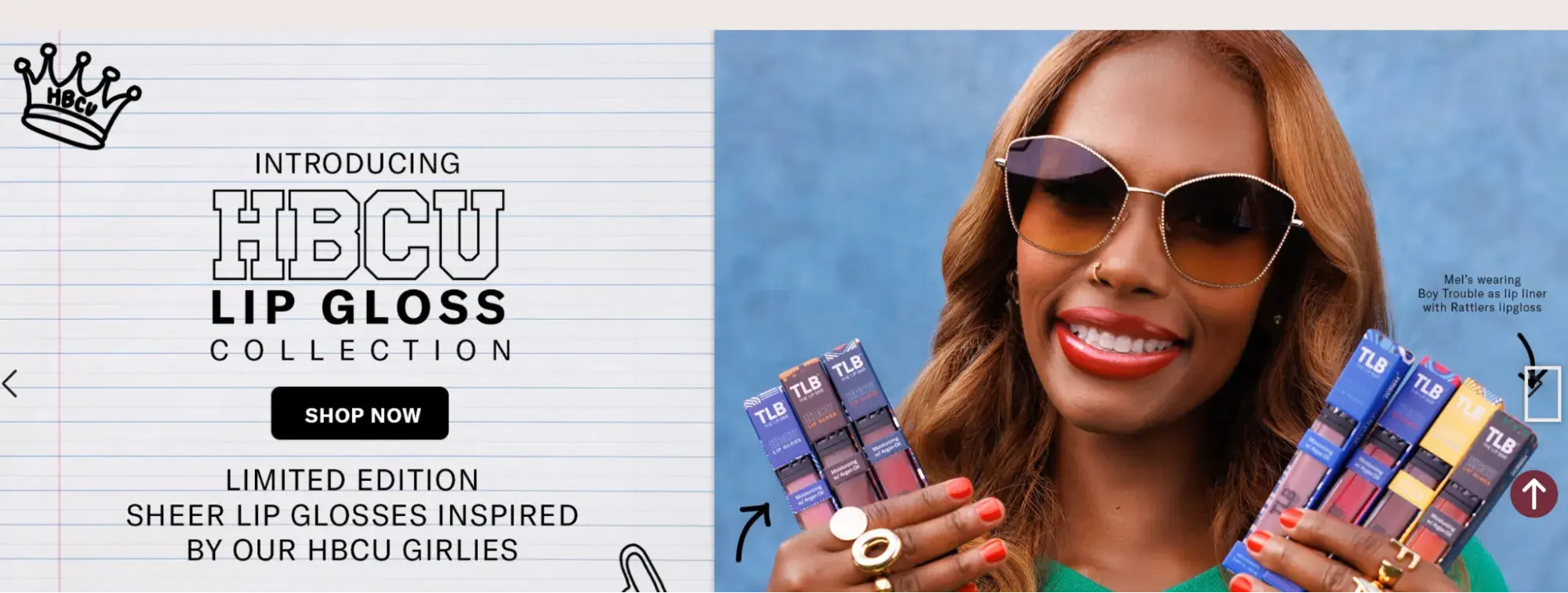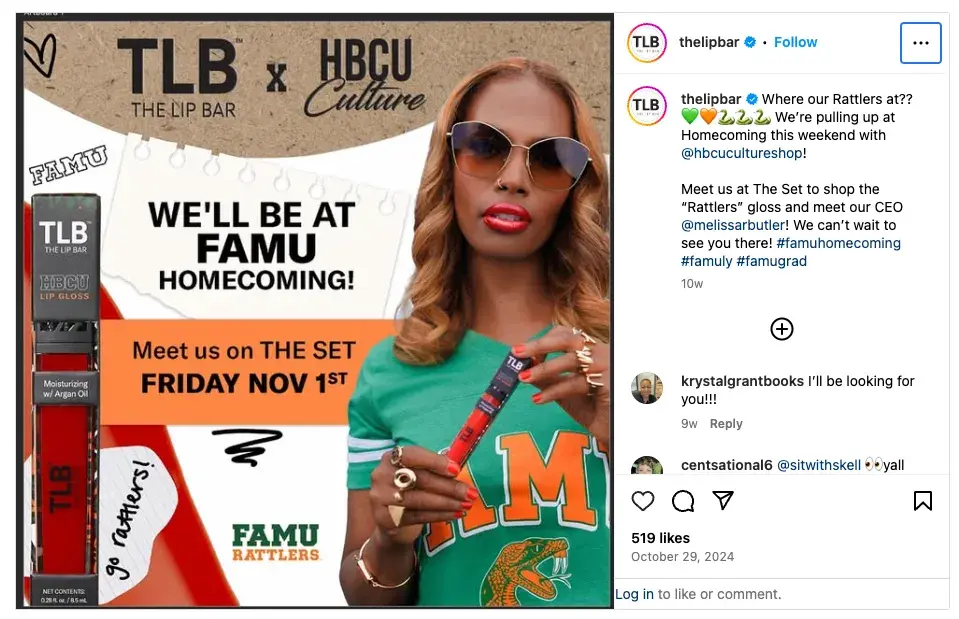But how does this help you plan better campaigns? And why has it become such a critical part of modern marketing strategies? I’ll break down how a strong media mix works, share some compelling stats, and highlight an example of a brand that is nailing it to take their campaigns to the next level.
Table of Contents
What is a media mix?
A media mix is a marketing term for the combination of channels a business uses to meet its marketing goals. It can include billboards, email, websites, and social media. Businesses might refer to their marketing mix when thinking about how to hit future marketing campaign goals.
A media mix is another term for an overview of the channels businesses choose to execute their marketing strategies on. Ultimately, media mix optimization is the process of analyzing the performance of those channels.
Think about the last campaign you saw from one of your favorite brands. What did they do differently that really clicked with you? By incorporating a media mix into your yearly planning, you can narrow down what resonates with your audience.
Media Mix Example
Theory is great and all, but it’s important to see this approach in action. I immediately think of makeup brand The Lip Bar’s recent campaign introducing their limited edition HBCU lip gloss collection.
To build anticipation and drive demand for this limited product line, The Lip Bar launched a multi-channel campaign that reached audiences both online and offline.
First up, website.

When you land on the brand’s homepage, you’ll see an image of the CEO with the following sentence “Introducing HBCU lip gloss collection. Limited edition sheer lip glosses inspired by our HBCU girlies.”
Upon clicking on the image, you’ll arrive at a landing page that displays the full collection of lip glosses and explains the concept behind this limited edition.

The second digital channel the brand leveraged for this campaign is YouTube, publishing a 59-second video celebrating HBCU culture paired with the lip gloss.

Moving offline, I love how the brand also showed up at FAMU’s homecoming and set up a pop-up shop. They advertised on Instagram to get people to their in-person event.

So, what’s the conclusion to draw here? The benefit of using a media mix is to leverage different strategies to see which tactics work and lead to better conversions.
I think The Lip Bar’s recent campaign is a great example of how any brand can leverage channels differently to reach the same marketing goal.
Media Mix Stats in 2025
Things have changed significantly in the last couple of years, especially due to the advent of AI. So, how are marketers tackling different channels and campaigns? The situation is evolving, so I’ll share the latest.
- 60% of brands plan to increase their media budgets, a significant rise from last year’s 29%.
- 35% of brands are shifting focus towards brand advertising over performance advertising.
- 56% of brands are reducing spend on linear TV, while 85% are increasing investments in Connected/Advanced TV, and 83% in Digital Video.
- 86% of U.S. B2C marketing executives are prioritizing finding better ways to reach Gen Zers and Millennials.
- 73% of marketers face pressure to achieve more with less, with 64% reporting insufficient budgets for their strategies.
Likewise, our extensive in-house research reveals the following:
- 81% of video marketers use social media as their primary channel for sharing or hosting marketing videos.
- 67% of marketers report that sharing marketing videos on social media platforms like YouTube, Instagram, and TikTok yields the highest ROI.
- 43% of marketers use social media as a marketing channel, with Facebook and Instagram providing the best ROI.
- 50% of marketers leverage video in their marketing strategy, closely followed by images at 47%.
- 91% of businesses use video as a marketing tool, highlighting its dominance in the marketing industry.
Media Mix Optimization
Now that you know what a media mix is, how do you find the right mix for your brand and product?
That’s where media mix optimization comes in. Based on data from your previous campaigns and audience research, you will be able to identify the best channels to reach your audience — and then send your message across those various media.
I think optimizing your media mix is important because it will allow you to invest more time and money into marketing strategies that are best suited for your audiences.
When you optimize a marketing media mix, this means looking at the analytics and ROI of various marketing strategies. This can be anything from engagement data of social media platforms to views on the newest commercial.
Enter media mix modeling. If media mix optimization is the “what,” modeling is the “how.” Every model can (and should) look different, depending on your marketing and broader business goal.
Media Mix Modeling
Media mix modeling, also known as marketing mix modeling, is an analysis technique used to measure campaign impact and determine how each channel (and certain elements) contribute to conversions. Results from media mix modeling allow marketers to learn what drives conversions to create campaigns that offer a high return on investment.
Media mix models can be used to analyze the relationship between a dependent variable and an independent variable.
For instance, let’s say my business has a question like, “How did paying for a sponsored tweet affect overall blog traffic?” My business’s media mix model should then accurately depict how a dependent variable — like overall blog traffic — relates to an independent variable, such as investing in X.
For businesses still deciding if a media mix optimization is a good idea for them, I’ve put together key tips to guide you when creating a media mix model. Let’s explore those next.
Tips for Optimizing Your Media Mix
1. Collect personal-level data.
Here, you need to find and focus on analytics that will help provide an accurate picture of how customers engage with your media mix.
Analytics software is expansive and offers an array of tools for use. If you ask me, there’s no reason to rely on anything other than the HubSpot Marketing Hub.
I would also advise against having too many metrics; this can be confusing and lead to inaccurate data. Hence, the best plan is to have an idea of which metrics you need to track so they can be right from the beginning.
A normal media mix optimization process can take anywhere from a few months to a year. So, collecting the right information at the beginning contributes to getting the most accurate information overall.

2. Have a robust reporting process.
When using a media mix, you often combine online and offline strategies. With this in mind, it can be more difficult to measure the impact of a billboard compared to a paid social ad.
That means you’ll have to think outside of the box when evaluating your media mix. For instance, while an online ad will have clear conversion rates you can find, a billboard may require some creative tracking.
Perhaps, you can track the uptick in branded search volume or improved brand recall.
This requires having a robust reporting process that accounts for the events you’ll be tracking — both online and offline.
3. Choose the right platform.
Marketing teams that use CMS or analytics software are already ahead of the game. Software like this is essential to optimizing a media mix because it can give you numbers that would otherwise take some time to figure out manually.
A brand can analyze its media mix with the use of platforms that collect engagement data in real time and compile that data into tracking reports.
I recommend looking for a platform that can give a holistic view of results across the board, so results will maintain consistency. It’s also good to choose software that specializes in the marketing channels you’re using at the time.
Because optimizing is measuring a lot of different data at once, stick to as few systems as possible.
For businesses that are in the market for a CMS, Content Hub is a great option that is easy to use for brands of any size.
4. Analyze the data.
I’ve been talking a lot about the kind of data and analyzing that needs to be done in a media mix optimization, but another important factor is being able to interpret and understand that data.
It’s no secret that in the marketing world, there is an abundance of processes and acronyms floating around. While first getting into the groove of understanding them and what they mean can be intimidating, it’s important to know the data being collected and how to use it to your advantage.
For instance, if a marketing team had especially high click-to-open rates for weekly newsletters, that’s useful information to infer that the next campaign could benefit greatly from an email marketing rollout. Alternatively, if a marketing team has no idea what a click-to-open rate is, those numbers aren’t going to be helpful — just a little confusing.
Reading data to understand its usefulness is just as important as collecting it.
5. Consider public perception.
Knowing how the public perceives your brand can help fill in some interpretation gaps during the modeling process. In the media mix model, think about how to fit in customer opinion. That way, the numbers will have some customer opinions to define them.
There are a couple of ways I suggest you do this:
- Monitor brand mentions. To better understand your brand perception, monitor your brand mentions on social media. Take note of the positives, the negatives, and the questions.
- NPS survey. You can also create a survey to know how your customers feel about your company and its services and use a net promoter score (NPS).
An NPS asks customers how likely they are to recommend a business to a friend. Knowing this will aid in figuring out how a business fares among the competition in the market. It will also assist in future marketing endeavors.
- Track relevant metrics. Keeping a pace of your metrics like brand awareness, brand loyalty, and customer satisfaction can help you gauge how your brand is doing in the public’s eye and where you could improve.
These methods ultimately give the media mix optimization reigns to the customer.
Takeaways
My biggest takeaway is that you have to advertise through a variety of media in 2025. Gone are the days of simple, one-stop-shop advertising. But to effectively put your message in front of your target audience, you need to optimize your media mix with real data to know where your audience is and how to reach them.
Taking the time to optimize your strategy will ultimately save you time and direct your resources to the right channels.
Editor's Note: This post was originally published in February 2020 and has been updated for comprehensiveness.
Media Planning





![13 Media Planning Tools I Tried & What Worked Best [+ Free Template]](https://53.fs1.hubspotusercontent-na1.net/hubfs/53/media-planning-tools-1-20250304-7834338.webp)
![Media Mix Modeling: What It Is and How to Use It [+ Examples]](https://53.fs1.hubspotusercontent-na1.net/hubfs/53/media-mix-modeling-1-20250216-2505933.webp)
![Media Buying 101: What It Is and How It Works [+ 14 Platforms to Use]](https://53.fs1.hubspotusercontent-na1.net/hubfs/53/media-buying-1-20250115-5695026.webp)

